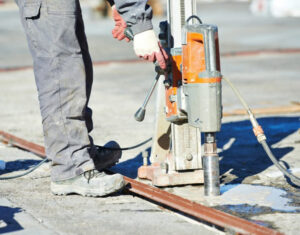There are plenty of reasons for getting concrete scanned before excavating underground. With a simple concrete scan, a lot of damage can be prevented to both people and properties, and it also saves plenty of money by avoiding expensive repairs. Scanning is a necessary procedure for ensuring that underground utilities are kept safe, but what do all of these utilities do, and why are they important? Today, we’ll be going over the different kinds of underground utilities and their purposes.
Rebar
Rebar is shorthand for “reinforcement bar,” and it does what the name implies; it reinforces the structure. It’s often used for concrete construction for this reason. During concrete scanning, it’s possible to locate rebar by scanning floors, columns, and walls. Reinforcement steel tends to be present, and it gets marked on the surface so that concrete drilling doesn’t put the concrete’s structural integrity at risk.
Conduits
Conduits or utilities are able to be located in a few different areas. They can be inside of the screed layers, underneath concrete slabs, or inside of the concrete slabs. Concrete scanning is needed before trying to find conduits because striking them could injure people or cause power outages to occur. The damage that’s caused by damaging these conduits can also result in heavy expenses to get everything fixed. Metallic and plastic conduits are also able to be found within the floor.
Post-Tension Cables
These are highly valuable utilities. Cables are used in many settings, such as office buildings, bridges, and parking garages.
Post-tension cables come in two main varieties. There are bonded cables and unbonded cables. If a cable is unbonded, there won’t be any bond that goes between prestressing steel and whatever concrete surrounds it (except the concrete around the anchorages). This can be located inside of the slabs and beams.
Voids
You should also use concrete scanning to find air gaps and voids inside of concrete slabs. You’ll typically locate voids beneath asphalt and concrete surfaces, and they tend to happen because of either compaction, pipe bursting, or erosion. Without concrete scanning, voids can go undetected for a long time, and the structural integrity of buildings can be put at risk, to the point that they could even collapse.
Concrete Visions Will Get The Job Done Right
Concrete Visions has been working with clients for over 25 years. Our G&M Services installers are certified with the industry’s major firestop product manufacturers. As part of our firestop service, we can assess abnormal field conditions and, with the manufacturer’s technical support assistance, provide engineering judgments in a timely fashion to comply with contract specifications. Our Field Mechanics undergo ongoing training, including mandatory monthly safety meetings, weekly Toolbox Talks where safety and equipment information is shred, and trainings on safe work standards and safety best practices.

